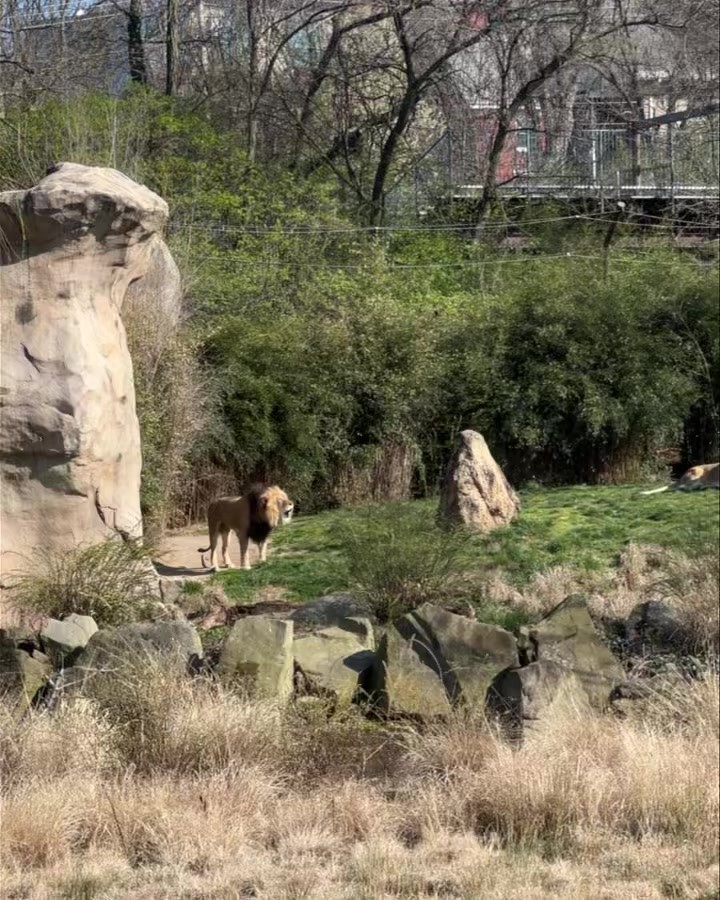– Understanding the science behind a lion’s roar
– The role of vocalizations in lion social structures
– Practical implications for wildlife conservation efforts
– How zoo management contributes to lion conservation
– Engaging the public in lion conservation through education
The lion’s roar is an iconic sound of the wild, symbolizing power and commanding respect across the savannas of Africa. However, few know these vocalizations’ complex biology and crucial communication role within lion communities. Additionally, this understanding holds significant value for wildlife conservation efforts and zoo management practices, which aim to preserve the magnificence of these majestic creatures for future generations.
Lion vocalizations, particularly roars, serve multiple functions in the wild. First, they are a fundamental aspect of territory establishment and maintenance. Thanks to unique adaptations in their vocal cords, a lion’s roar can carry over 5 miles, creating a low-frequency sound that efficiently travels long distances. This capability plays a crucial role in avoiding physical confrontations with competing pride, as the strength and frequency of a roar can indicate the presence and health status of a male lion to potential rivals.
In addition to territorial communication, lion roars facilitate bonding and coordination within pride. Each lion’s roar is distinct, allowing members of the pride to recognize each other and maintain cohesion even when out of sight. This vocal identification aids in reunification efforts after members have dispersed to hunt or patrol their territory.
A profound understanding of these vocal behaviors is critical for wildlife conservationists. Researchers can gather valuable data regarding pride territories, population health, and social structures without intrusive tracking methods by monitoring lion vocalizations. This non-invasive technique enhances our capacity to protect lion habitats and manage human-lion conflicts more effectively.
Zoo management plays a pivotal role in the conservation of lions by providing safe environments that emulate their natural habitats as closely as possible. Facilities are designed to encourage natural behaviors, including vocalizations. Educating the public about the significance of lion roars in wild populations raises awareness and fosters support for conservation initiatives. Zoos actively participate in breeding programs to maintain genetic diversity and plan re-introductions to the wild, where these magnificent animals’ roars can resonate again across their ancestral landscapes.
Engaging the public in lion conservation efforts is pivotal. By demonstrating the power and beauty of a lion’s roar, whether through in-person experiences at zoos or via digital platforms, individuals become more invested in the plight of these animals. Highlighting stories, like those of John and Imani showcasing their vocal prowess, draws attention to the broader challenges facing lion populations. This engagement is not merely about awe and wonder; it’s a call to action, reminding us of our responsibility to protect these majestic creatures and their ecosystems.
Leveraging the fascinating aspects of lion behavior, like their captivating roars, conservationists, zoo managers, and educators, can foster a deeper appreciation and understanding among the public. This, in turn, supports broader conservation goals, ensuring that lions continue to thrive in the wild. Through coordinated efforts in research, habitat protection, and public education, the hope is to secure a future where the lion’s roar continues to echo across Africa’s landscapes, symbolizing a successful harmony between human activity and wildlife preservation.
*****
Source Description
Have you ever heard a lion roar?! Listen as John and Imani demonstrate their loud vocalizations! A lion’s roar can be heard up to 5 miles away!


